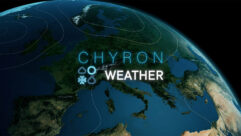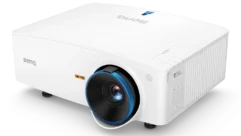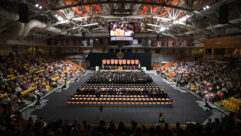Howttsmade: The story behind how Technomad manufactures its Weather Techloudspeakers.
Feb 1, 1998 12:00 PM,
Christopher Buttner and Karl von Kries
Viewers of the Technomad demonstration, whether in person or on video,usually stop cold in their tracks. In Technomad’s durability demo video, aTechnomad loudspeaker is thrown into a river from a 50 foot (15 m) bridge,shot with six shotgun blasts and finally lit aflame after being doused withgasoline. In the physical demonstration, a water pump continuallyrecirculates 300 gallons (1,136 liters) of water per hour over an activeTechnomad loudspeaker. The climax of the demonstration is when the volumeis turned up, and water is sprayed onto the gathered crowd from theloudspeaker’s port and bass driver.
Technomad builds loudspeakers to endure some of the most hostile audioapplications imaginable, regardless of whether the installations arepermanent, semi-permanent or mobile, indoors or out. Granted, gettingthrown into a river, lit aflame and shot are all a little extreme, butthese tests are a testimony to the durability of the Technomad loudspeakercabinet, its construction and the components contained therein. And theycontinue playing, sounding great all the while.
How does a Technomad cabinet withstand such abuse? The answer comes from aunique flight case manufacturing technology called roto-molding that wasdeveloped and first applied in 1954. Since that time, this case and cabinettechnology has been in active service in all of the United States and someforeign branches of the military, as well as the broadcast, audio, medicaland computer industries. The end result of the roto-molding processproduces a lightweight, durable, almost indestructible, one-piece militaryspecification, the ATA-rated shell. This shell is impervious to water,sand, salt, temperature, mold, mildew, condensation, chemical, insects, UVradiation and acids.
The electronics contained therein are obviously protected by the cabinet,but they are also specifically designed to withstand the aforementionedelements. Additional travel protection is assured when the water-tight,gasketed lid is attached to the front of the cabinet, and the loudspeakertransforms into an ATA III-rated flight case.
Injection molding and roto-moldingThe majority of plastic loudspeakers are manufactured by injection molding.Injection molding is a process where very hot plastic is quickly squeezedin between an outer and inner mold. The plastic is then rapidly cooled,which can cause stress concentrations, particularly at the corners or edgesof the object or around detailed features. Air bubbles can also form,causing areas of weakness.
Injection molding also allows for a cabinet wall thickness of only 1/8 inch(3 mm) to 1/4 inch (6 mm). Therefore, intricate ribbing must be designedinto the injection-molded cabinet sections to provide strength and rigidityto whatwould otherwise be a flimsy, highly resonant finished product. Allinjection-molded loudspeakers are molded in multiple sections and screwedtogether to create the finished product. Injection-molded products areproduced faster, but they are not as strong as a roto-molded product.
Because roto-molding is a time-consuming process, taking about one hour toproduce one Technomad loudspeaker cabinet, the process allows the finished,one-piece polyethylene shell to anneal fully. The roto-molding processproduces 1/2 inch (13 mm) thick linear cabinet walls and 3/4 inch (19 mm)thick corners that are virtually free of imperfections. This produces astrong cabinet, especially in the corner areas where impact is more likely.The corrugation that is designed into the cabinet walls provides incrediblerigidity to the entire cabinet structure without the need for additionalinternal cross-bracing, supports or structure.
The finished Technomad speaker cabinet offers acoustic performancecomparable to 18-ply Baltic or Finland birch cabinets but without thedefects, gaps and sensitivity to moisture and rot inherent in suchmaterials. Because a Technomad loudspeaker cabinet is a one-piece shell,the cabinet is free of anomalies. This unique, patented cabinet designallows a Technomad loudspeaker to produce a full, articulate sound withoutdistortion or inefficiency problems due to wall flex, vibration andimperfections.
The manufacturing processTechnomad’s roto-molding techniques are extremely sophisticated and, ofcourse, proprietary. Basic roto-molding is relatively easy, butroto-molding a precision loudspeaker is difficult and expensive. Theroto-molding machines that produce the cabinets are fairly massive, complexand expensive. Imagine a three-blade windmill laying on its back. At theend of each blade, herein referred to as arms, are one to four molds,depending upon size and complexity.
Roto-molding is a three-stage process. One arm holds the mold from wherethe finished product is unloaded after it has been through the oven andcooling chamber. Raw polyethylene isn’t a gel or liquid; it’s a flour-likepowder when put into the mold. This polyethylene powder is referred to as acharge. Unlike other roto-molded loudspeakers, Technomad does not cut itspolyethylene charge with foam, which decreases cabinet weight and mass,producing a weaker cabinet.
When one mold is being charged, another arm simultaneously has as many asfour fully charged molds in the oven. The ovens are as wide as 20 feet (9m) wide, deep and tall. The molds rotate slowly for as long as 25 minuteson all three axes via a complex motor system and gear mechanism. A completethree-axis rotation ensures uniform distribution of plastic materialthroughout the mold as the plastic melts at 600 degreesF (315 degreesC).The third arm and its molds simultaneously move into the cooling chamber,which is as large as the oven, for 25 minutes. In the cooling process, themolds are first cooled with a water shower and then air cooled. Thisproduction cycle can continue indefinitely, often 24 hours per day.
Technomad believes it is the only professional loudspeaker manufacturer inthe world building a line of professional loudspeaker cabinets madeentirely of recycled materials. Manufacturing and cabinet design advancesallow Techno-mad to use 90% post-industrial and 10% post-consumer plasticsin the manufacture of its black loudspeaker cabinet moldings. Technomadloudspeakers are also available in a wide variety of colors, 13 aside fromstandard black, with each color molded through the cabinet using dyes freeof heavy metals. A Technomad loudspeaker cabinet color and the cabinetitself will never fade or breakdown due to chemicals, chlorine, bromine orUV radiation.
All roto-molded cabinets come out of the mold as a complete, one-pieceshell. The polyethylene powder builds up everywhere in the mold, even wherenone is needed, such as where drivers will eventually be mounted. Theseunnecessary areas of plastic material are later cut out. Speaker horns,driver and mounting hardware cavities, ports, handle and latch hardwareanchors and standmount sockets are molded into the cabinet via precisionmachined, modular tool elements. These elements are swap-pable, allowingproduction of several cabinet designs from the same basic shell tool. Withthe lid of a Chicago subwoofer or Cairo full-range speaker cabinet mold,two circular areas create the indentations for the 12 inch (305 mm) and 15inch (381 mm) drivers in the cabinet, and smaller circular elements createports for recessed potentiometer cavities.
A single mold, depending upon size and complexity, averages in pricebetween $50,000 to $150,000 to produce. Mold modifications usually run inthe area of $5,000 to have an engineer even think about a design change, toas much as $20,000 or more to carry out the modifications. The molds areconstantly being subjected to extreme temperatures that vary from 600degreesF (315 degreesC) while in the oven to 60 degreesF (15 degreesC) whenit goes into the cooling chamber. The low-maintenance, single-cavity moldsare stamped and machined from aluminum and steel for long tool-life.
To ensure the correct placement of stainless steel cabinet hardware,butterfly anchors and T-nut flypoints are secured in place during themolding process on small precision pins and extremely strong magnets.Loudspeaker cabinet hardware anchors and/or T-nuts are placed into the moldprior to the plastic powder during the charging stage. These inserts arestrong because of their imbedded construction. The pull strength of amolded-in T-Nut flypoint is rated at 400 pounds (180 kg) per point, and thesmall, low-profile, recessed lid latches are ATA-III rated and meetMil-Spec 810E for security, durability and long life.
Anywhere a hole in the cabinet is desired, a knife edge is designed intothe mold element. This knife edge prevents significant accumulation ofplastic, allowing unwanted plastic to be removed with a sharp blow from ahammer while the mold is still warm.
It is also possible to control how thick or thin a particular part of themolding will be by heat shielding that portion of the mold. The less heat asection of the mold receives, the thinner the wall section in that area,such as the areas where the drivers will be mounted. This process allowsfor easy removal of unwanted areas and reduces waste.
Roto-molded objects cannot be formed with features that protrude into thefinished molded product, unless, of course, that portion of the mold isremovable, such as the standmount sockets that are molded into each side ofthe Technomad Berlin, Chicago, Noho, Cairo and Soho cabinets.
Cool cabinetsAfter the cabinets have cooled, they are sent to mechanical assembly whereD-ring flypoints, hardware and handles are attached. Crossovers and filternetworks are all front-loaded through the 12 inch (305 mm) and 15 inch (381mm) openings where the drivers will eventually be mounted. These internalcomponents are specially designed to be 100% weather-proof. Literally,water, sand, salt and mold have no effect on any Technomad crossovernetwork or the internal PassiveProcessor filter network. The uniquecontoured design of these finished internal components glove-match theinterior contours of the cabinets and lock into place. This exacting fitassures no amount of shock will ever knock these components loose. Internaltuning is completed with precision-density, weather-resistant polyurethanefoam.
Customized cast-frame bass and coaxial drivers start with paper cones, butafter Technomad’s proprietary three-step chemical process is applied, thedriver material resembles plastic more than paper. Technomad’s chemicaltreatment assures the cones will not absorb or be impaired by water ormoisture. The chemical process also extends the lifespan of the driveritself in extremely hot and dry conditions by preventing the cone materialfrom drying out. Water, should it get on the drivers, simply sheds away.
The last step of assembly is the three-layer, acoustically transparentWeatherTech grill system. The WeatherTech grill, with its tight perforationpattern and inner layers of mesh and foam, breaks down and sheds away themost tenacious wind-driven rain or water. These fine mesh and foam innerlayers also prevent insects, rain, sand and even the finest dust fromentering the cabinet. The precision-density, internal polyurethane foamalso collects extremely fine dust that might get past the three-layer grillsystem.
ApplicationDuring a recent inspection of a 22 Technomad loudspeaker installation at apopular seaside resort in Tijuana, Mexico, several Cairo loudspeakers wereopened to evaluate the effects of the elements on the system. The speakershad been exposed to the direct Pacific Ocean winds, sun, spray, sand anddust for four full months. When the grill was removed, the cabinet anddrivers appeared as though they had just come from the factory. Althoughdust had built up over the port area on the external grill, when severaldrivers were removed and the cabinet interiors were examined, no dust wasfound in the cabinet. Maintenance staff at this facility is simplyinstructed to place the lids on the loudspeakers prior to hosing the dustoff at closing or just prior to opening.
An example of another harsh installation is one of the 14 Technomadsinstalled in scene 12 of Jurassic Park at Universal Studios, Hollywood, CA.These loudspeakers were installed in October 1996 after the original soundsystem succumbed to the environment only four months after the attractionfirst opened in June 1996. Two of the Berlin loudspeakers have hung in thewaterfall where 5,000 gallons (18,925 liters) of water is re-circulatedover and around them 12 to 16 hours per day for 363 days per year.
Installations and applications for which Technomad loudspeakers are mostsuited are just about anything you can throw at them. Militaryapplications, cruise ships, amusement parks, seaside resorts, multi-usefacilities, indoor pools and skating rinks are all applications for whichTechnomad loudspeakers are well suited. What do you have in mind?










